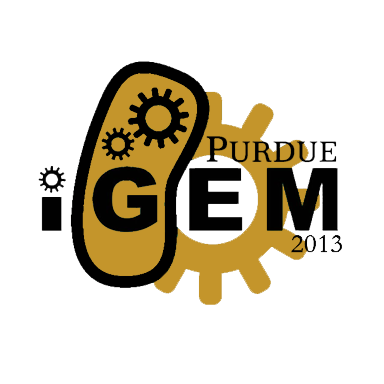The safety page is where users can see the safety precautions we took in lab. This includes sterilization techniques, lab rules, and biosafety ratings.
Safety Questions
1. Description of the Chassis organism(s) we used for this projectWe used three different strains of ''E. coli'' including BL21, XL-Blue, and BM2.5. These were all Risk Group 1. ''E. coli'' are a human pathogen which causes irritation if it makes contact with skin or eyes. If the bacteria is injected, it can also cause irritation to the respiratory tract and kidneys. Below is the link for the risk assessment of our bacteria:
http://www.absa.org/riskgroups/bacteriasearch.php?genus+&species+coli
2. Our highest Risk Group used was Group 13. List of all new coding regions used in this project:
| Part Number | Where did you get the physical DNA for this part? | What species does this part originally come from? | What is the Risk Group of the species? | What is the function of this part, in its parent species? | |
| 1 | BBa_K1225000 | IDT | E. coli | 1 | Promoter |
| 2 | BBa_K1225001 | IDT | E. coli | 1 | Promoter |
| 3 | BBa_K1225002 | IDT | E. coli | 1 | Promoter |
| 4 | BBa_K1225003 | IDT | E. coli | 1 | Promoter |
| 5 | BBa_K1225004 | IDT | E. coli | 1 | Promoter |
- Do the biological materials used in your lab work pose any of the following risks?
- Risks to the safety and health of team members or others working in the lab?
- None of the biological materials pose risk to members. We worked only with GFP as a gene of interest with regulatory parts that do not function in isolation. We are not adding any viral DNA, toxins, or carcinogens that would pose a threat to the researchers. GFP has been used repeatedly and is well documented without evidence of risk to the safety of those who work with it directly.
- Risks to the safety and health of the general public, if released by design or by accident?
- None of the regulatory parts would be functional in isolation. The bacteria expressing these genes do not show viability changes and are not viable outside of the lab environment. GFP has not been shown to cause a safety or health risk to the general public, and our regulatory DNA has not shown any indication that this would change.
- Risks to the environment, if released by design or by accident?
- The primary risk to the environment would be the uptake of the DNA by other bacteria; however, because our gene of interest is GFP, this is not a cause for concern as the result would be the bacteria fluorescing green. The use of GFP has not been shown in the past to pose a risk to the environment by design or accident. If the regulatory genes were released, the result would be eventual degradation of the DNA as they do not function in isolation.
- Risks to security through malicious misuse by individuals, groups, or countries?
- The misuse of our parts would have to include the individuals, groups or countries inserting their own gene of interest as no toxins, viral DNA, or carcinogens are currently present. The parts submitted can be used as any other regulatory part found in the Registry by anyone with access.
- If your project moved from a small-scale lab study to become widely used as a commercial/industrial product, what new risks might arise? (Consider the different categories of risks that are listed in parts a-d of the previous question.) Also, what risks might arise if the knowledge you generate or the methods you develop became widely available? (Note: This is meant to be a somewhat open-ended discussion question.)
- GFP would not be the commercial/industrial product. The parts would be used to regulate the expression of the product by the bacteria. There would be little to no risk to the environment, workers, or general public based solely on the regulatory parts; however, the new gene of interest would be consistently expressed at a given level based on the part selected. This could cause problems if released as there is no current “off” or kill switch in the regulatory machinery. Based on the new gene of interest, the risk level would have to be assessed. Other factors to be considered in a scale-up is the viability of the bacteria outside of the lab/production center, the safety of individuals using bacteria in large quantities that can cause irritation if contacted or ingested, and how the introduced GOI affects the viability and pathogenicity of the bacteria.
- Does your project include any design features to address safety risks? (For example: kill switches, auxotrophic chassis, etc.) Note that including such features is not mandatory to participate in iGEM, but many groups choose to include them.
- No, we do not have any design features to address safety risks.
- What safety training have you received (or plan to receive in the future)? Provide a brief description, and a link to your institution’s safety training requirements, if available.
 "
"
